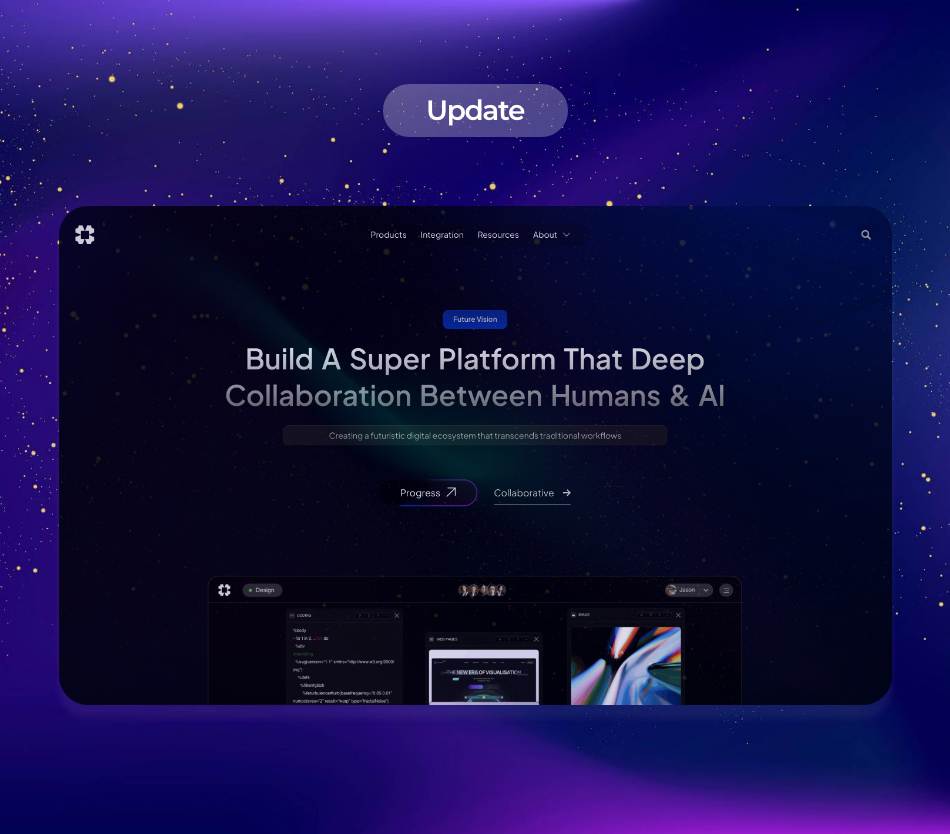In the fast-paced world of technology, the term Artificial Intelligence Operating System (AIOS) stands out as a significant game-changer. This operating system is designed to streamline and enhance performance across various sectors, including robotics, data analytics, and industrial automation. As industries evolve, so do the tools that empower them. This article delves into the transformative role of AIOS and how it is shaping the future of critical industries.
### **1. AIOS for Robotics: Enhancing Automation and Efficiency**
Artificial Intelligence has always played a pivotal role in robotics, but AIOS takes it a step further by providing a robust framework for machine learning algorithms and control systems. By integrating AIOS into robotics, developers can create smarter machines that learn from their environment, adapt to new situations, and perform a variety of tasks with precision.
AIOS facilitates seamless communication between robots and humans, allowing for better collaboration. For instance, robots equipped with AIOS can analyze real-time data from their sensors to make decisions on the fly, improving their efficiency in operations. A notable example is the deployment of AI-driven robotic arms in manufacturing settings, which can adapt to varying production loads without requiring extensive reprogramming.
Furthermore, the utilization of AIOS in robotics enhances the capabilities of autonomous vehicles. These vehicles rely on complex algorithms to navigate their environments, avoid obstacles, and interact safely with pedestrians. AIOS provides the necessary infrastructure for these algorithms to operate more effectively, leading to safer and more efficient transportation solutions.
### **2. AIOS for Data Analytics: Harnessing the Power of Information**
Data is often referred to as the new oil, and the ability to extract insights from it is invaluable across industries. AIOS magnifies the capabilities of data analytics platforms by offering a cohesive environment for data processing, storage, and decision-making. With AIOS, organizations can streamline their data workflows and gain actionable insights faster than ever before.
AIOS enables advanced machine learning models to analyze vast datasets, uncover trends, and predict future outcomes. For example, in healthcare, AIOS equips data analysts with the tools to process patient records and pinpoint patterns that could lead to improved treatments. By identifying high-risk patients early, healthcare providers can implement preventive measures, ultimately improving patient outcomes.
Moreover, businesses in retail can leverage AIOS-powered data analytics to enhance customer experience. By analyzing purchasing behaviors and preferences, companies can tailor marketing campaigns, optimize inventory levels, and personalize interactions with customers. As a result, retailers benefit from increased sales and customer loyalty.
Another compelling use case is in finance, where AIOS aids analysts in detecting fraudulent transactions. By continuously analyzing transaction data and applying machine learning algorithms, financial institutions can flag suspicious activities in real time, significantly reducing the risk of fraud.
### **3. AIOS for Industrial Automation: Streamlining Production Processes**
Industrial automation has seen immense growth in recent years, and AIOS is at the forefront of this revolution. By providing a comprehensive framework for integrating various automation technologies, AIOS enhances productivity, reduces operational costs, and ensures higher quality control in manufacturing processes.
One of the most significant advantages of AIOS in industrial automation is the ability to connect disparate systems and devices. With centralized management, manufacturers can optimize their supply chain operations and enhance communication between machines. For instance, an AIOS can analyze performance data from multiple equipment pieces and suggest maintenance schedules, minimizing downtime and extending the life of machinery.
In addition to predictive maintenance, AIOS enables real-time monitoring and analytics on the factory floor. For example, sensors can collect data on machine performance, and AIOS can analyze this information to identify inefficiencies. This approach allows manufacturers to address issues proactively, reducing waste and improving overall efficiency.
Moreover, AIOS enhances safety in industrial settings by enabling smart monitoring systems. By deploying AIOS-driven sensors, organizations can analyze air quality, temperature, and equipment conditions in real-time. If the system detects hazardous situations, it can issue alerts or automatically shut down machinery to prevent accidents.
### **4. Key Trends in AIOS Implementation**
As industries increasingly adopt AIOS, several key trends have emerged that are shaping its implementation and development.
**a. Integration of Edge Computing**: The rise of IoT devices has driven the demand for edge computing capabilities within AIOS. By processing data closer to the source, businesses can reduce latency and enhance real-time decision-making.
**b. Emphasis on Open-Source Solutions**: Many companies are gravitating towards open-source AIOS options to foster community collaboration and innovation. This approach enables organizations to customize their systems according to their specific needs, promoting flexibility and adaptability.
**c. Focus on Cybersecurity**: As more machines and devices connect to central AIOS, ensuring their security becomes vital. Organizations are prioritizing cybersecurity measures to protect sensitive data and maintain operational integrity.
**d. Human-Robot Collaboration**: The future of work is all about collaboration between humans and machines. AIOS is designed to support this interaction, empowering robots to assist human workers efficiently and safely.
### **5. Real-World Applications of AIOS**
The application of AIOS spans various industries, each leveraging its capabilities to drive innovation and efficiency.
**Manufacturing**: Companies like Siemens have started integrating AIOS with their manufacturing systems, allowing them to streamline production processes, reduce waste, and enhance machine learning capabilities. This leads to a reduction in operational costs and improved product quality.
**Healthcare**: Organizations such as IBM Watson Health utilize AIOS to analyze massive amounts of healthcare data, enabling timely diagnosis and treatment recommendations. By harnessing AIOS, healthcare providers can leverage analytics to improve patient care and optimize operational efficiency.
**Retail**: Retail giants like Amazon use AIOS for data analytics to enhance customer experience. With rich insights from customer data, they can tailor shopping experiences, forecast demand, and manage inventory efficiently.
**Logistics**: Companies like FedEx are employing AIOS to optimize their logistics operations. By analyzing real-time data, they can streamline delivery routes, reduce costs, and improve customer satisfaction.
### **Conclusion: The Future of AIOS Across Industries**
As industries continue to embrace AIOS, the potential for innovation and efficiency becomes limitless. From robotics that work alongside humans to data analytics that drives smarter decision-making, AIOS is paving the way for a new era of technological advancement.
The successful integration of AIOS into operations is a testament to the transformative power of artificial intelligence. Businesses that leverage these systems will undoubtedly find themselves at the forefront of their industries, ready to tackle the challenges of tomorrow with agility, precision, and insight.
In conclusion, as we move forward, AIOS is not just a tool but a transformative force that will redefine how industries operate, innovate, and compete. Organizations that recognize and harness the potential of AIOS will find themselves leading the charge into an intelligent future.
### **Sources**
1. M. S. Shafiq, “The Role of Artificial Intelligence in Robotics,” Journal of Robotics, 2023.
2. C. T. Zheng, “Data Analytics in Healthcare: A Review,” Journal of Health Informatics, 2023.
3. “Industrial Automation and AIOS,” Automation World, 2023.
4. L. K. Ray, “Exploring AI Operating Systems,” TechCrunch, 2023.
5. “Future Trends in AIOS and Robotics,” Robotics Business Review, 2023.



























